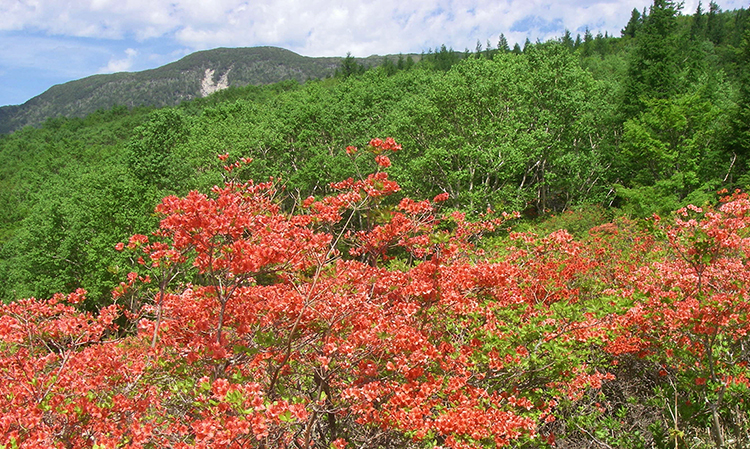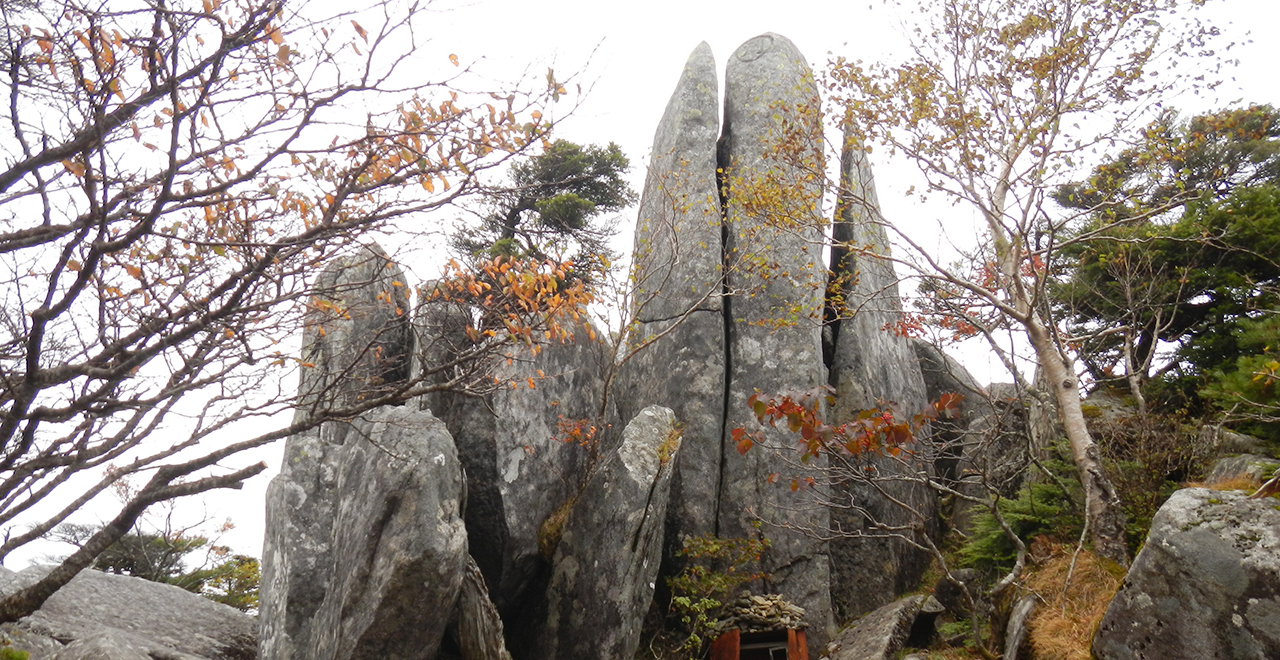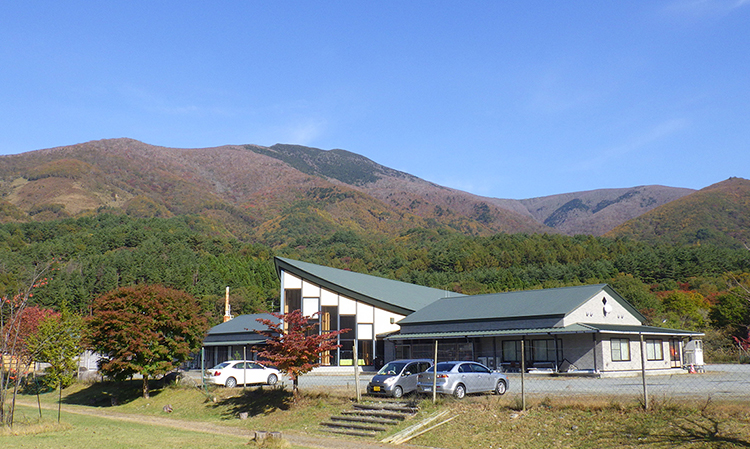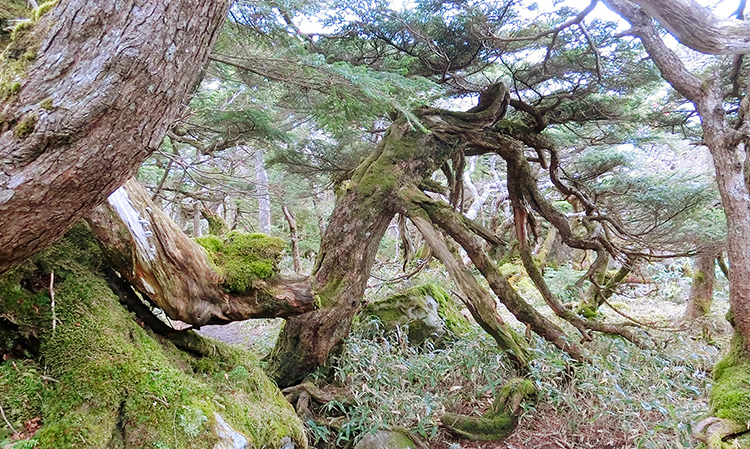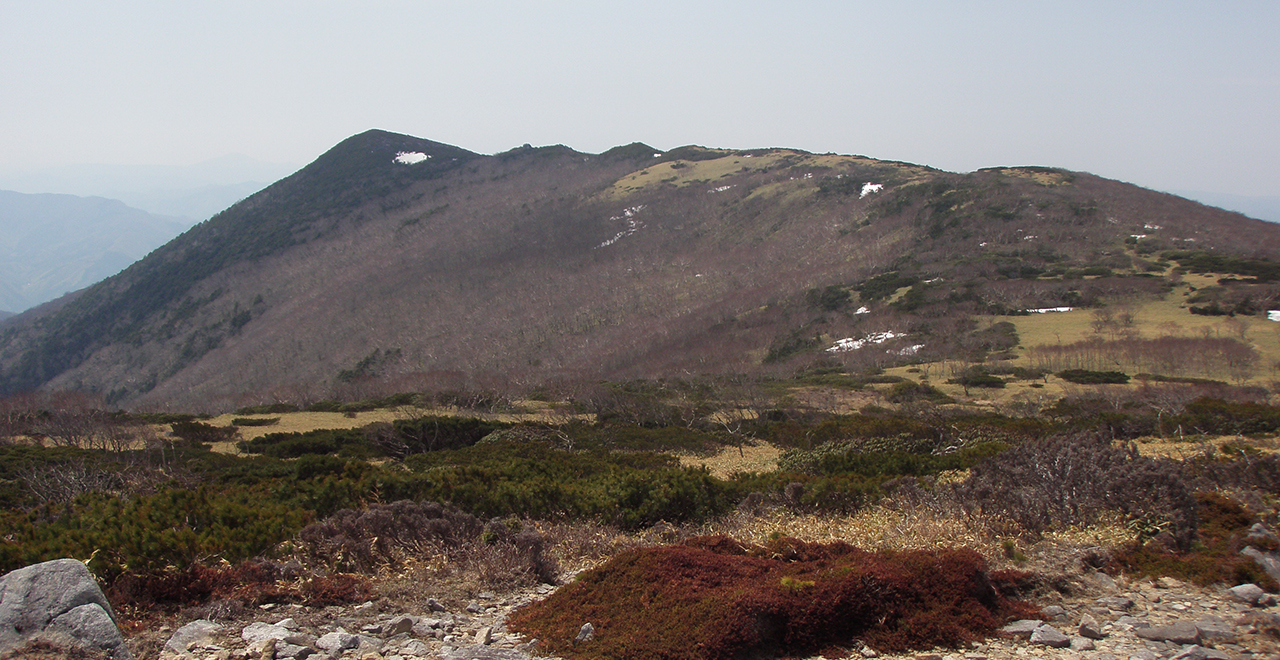Goyozan Recreation Forest
1,280.96ha
Elevation Lowest : 560m / Overall : 780―1,351m / Highest : 1,351m (Mt.Goyo Summit)
Forest with a superb view of the Sanriku Coast and beautiful seasonal flowers
Forest with a superb view of the Sanriku Coast and beautiful seasonal flowers
- Newest information
- Area
- Activities
- Overview
- Latest Information
- Usage Guide
- Facility
- Map
- Address
- Access
(Distances and times are
provided as a guide only) - Management office
contact details - Information on Other Local
Tourist Attractions - Official Tourist Information
- Recreation Forest
Management Committee - Supporters
- Other
- Newest information
- Gathering information in advance is important to safely enjoy forest recreation that brings you closer to nature.
・CHECK
・When you go out, please check local tourist and related information and gather information on road closures, weather conditions, etc.
- Area
- Tohoku
- Activities
- Flower-viewing (Tsutsuji / Shakunage) (Includes surrounding area) Autumn leaf viewing (Includes surrounding area) Waterfall viewing : Namiita Fudo Falls (Outside the forest) Birdwatching (Includes surrounding area) Picnics (lawn area/park) (Includes surrounding area) Mountain climbing (Includes surrounding area) River/sea fishing (Outside the forest) Hot Spring : Goyo Onsen (Outside the forest) Michinoku Coastal Trail (from the Otsuchi Section to the Rikuzentakata Section) (Outside the forest)
- Overview
-
- Geographical/topographical features
- Mt. Goyo lies in the southern part of the Kitakami Mountains. It extends over Ofunato City, Kamaishi City and Sumita Town and is the nearest of the mountains to the sea. The area near the summit is flat and commands an extensive view of the ria coast of the Sanriku region as well as Mt. Hayachine and Mt. Iwate.
- Historical/cultural features
- Mt. Goyo, rich in forestry resources such as Hinoki (Japanese cypress (Chamaecyparis obtuse)) and Tsuga (Japanese hemlock (Tsuga sieboldii)), was an important mountain under the direct control of the Date Domain in the Edo period (early 17th century to late 19th century), so it was called "Goyozan" (literally, an official mountain). The name was later changed to "Goyozan" (Mt. Goyo; literally, a five-needle mountain) after the Goyo Matsu trees (five-needle pine (Pinus parviflora Siebold et Zucc.)) that abounds on this mountain.
In 1966, it was designated as an Iwate prefectural natural park. - Climate, flora and fauna
- Mt. Goyo has a diverse mix of tree species. The upper half of the mountain is covered with trees such as Dakekanba (Erman’s birch (Betula ermanii)), Mizunara (Japanese oak mizu-nara (Quercus crispula Blume)), Hinoki Asunaro, (Thujopsis dolabrata (L.f.) Siebold et Zucc. var. hondae Makino), five-needle pine and Kometsuga (northern Japanese hemlock (Tsuga diversifolia)). Also, seasonal flowers can be seen, including Tsutsuji (Rhododendron subgen. tsutsusi), Shakunage (Rhododendron subgen. hymenanthes), Gankou Ran (Empetrum nigrum L. Var. Japonicum K. Koch) and Kokemomo (lingonberry (Vaccinium vitis-idaea L.)). The mountain is home to various animals, such as Nihonjika (shika deer (Cervus nippon)), Kamoshika (Japanese serow (Capricornis crispus)), Tsukinowaguma (Asian black bear (Ursus thibetanus)), Nihon Zaru (Japanese macaque (Macaca fuscata)), Inuwashi (Japanese golden eagle (Aquila chrysaetos japonica)) and Fukuro (Ural owl (Strix uralensis)), and is also designated as a wildlife sanctuary.
- Attractions
- The hike to the summit is relatively easy, requiring approximately two hours.
Flowers like Tsutsuji and Shakunage and autumn leaves can be viewed depending on the time of year.
The mountain’s proximity to the sea offers a grand view of the rias coastline of the Sanriku Coast from its summit. - Other
- The recommended trekking course, particularly for beginners, is the route from the Akasaka Pass Trailhead. Other courses may be blocked by fallen trees or other dangerous conditions, and there is a risk of getting lost.
- Latest Information
-
- Regular events
- ・Opening of Mt. Goyo to climbers (April 29 every year)
・Tsutsuji viewing (early June every year)
・Shakunage viewing (early July every year) - Warnings (Flora and fauna)
- Asian black bear: Tsukinowaguma (Asian black bear (Ursus thibetanus)) may be present during the period from May to November. When entering the forest, please carry a bear bell and stay in a group. Check for local information on bear sightings and warnings and follow instructions.
Ticks: Please note that ticks are present in bamboo grass areas. Wearing long sleeves and long trousers is essential. - Warnings (Other )
- Some trekking courses may not be in good condition, so caution is required to avoid fallen trees and other obstacles and to avoid becoming lost.
- Usage Guide
-
- Entrance fee
- Free of charge
- Opening seasons and hours
- Basically accessible 24 hours a day. However, the Recreation Forest is closed during the winter (December through early April) as Pref. Route 193 becomes impassable.
- Accommodation options
- [Inside the forest] Trail shelter (Shakunageso) (a drinking fountain and toilet available)
[Outside the forest] Hotels and inns in Ofunato City, Kamaishi City, and Sumita Town (all accessible in about 1 hour by car)
- Facility
- Toilets and drinking fountains (Includes surrounding area) (3 locations) Footpath / walking trail / nature trail (Includes surrounding area) Parking lot (1 location) (Outside the forest) Shop (Outside the forest) Restaurant (Outside the forest) Free public wireless LAN (Wi-Fi) (Outside the forest) World Camellia Hall Goishi (Payment required) (Outside the forest) Kamaishi City Municipal Iron and Steel Museum (Payment required) (Outside the forest) UNESCO World Heritage Site: Hashino Iron Mining and Smelting Site (Outside the forest) Accommodation facilities (Hotels/Japanese inns) (Outside the forest) Trail shelters at 2 locations
- Map
- Address
- Ofunato City / Kamaishi City / Sumita Town, Kesen County, Iwate Prefecture
- Access
(Distances and times are provided as a guide only) -
- By public transport
-
<Access from nearest railway station / bus stop>
- Use of a taxi from JR Sakari Station or Sanriku Railway Toni Station is recommended to get to the main trailhead (Akasaka Pass Trailhead). Rental cars are also available at JR Sakari Station.
- There is a fixed-route bus traveling from JR Sakari Station to Goyo Onsen, but it only makes three round trips a day.
<Access from major transport hubs to nearest railway station / bus stop>- ・JR Tokyo Station → (Tohoku Shinkansen: about 130 minutes) → JR Ichinoseki Station → (Ofunato Line: about 90 minutes) → JR Kesennuma Station (the Bus Rapid Transit (BRT) system on the Ofunato Line: about 80 minutes) → get off at JR Sakari Station → (taxi: about 30 minutes) → trailhead
- ・JR Tokyo Station → (Tohoku Shinkansen: about 180 minutes) → change trains at JR Shin-Hanamaki Station (Kamaishi Line: about 110 minutes) → change trains at JR Kamaishi Station (Sanriku Railway Minami-Riasu Line: about 10 minutes) → get off at Sanriku Railway Toni Station → (taxi (reservation required): about 30 minutes) → trailhead
- By car
-
<Access to the main trailhead (Akasaka Pass Trailhead)>
- Tohoku Expressway Hanamaki JCT → Kamaishi Expressway Miyamori IC → public road (large vehicles are not allowed to travel the Pref. Route 193 Toni Hikoroichi Line beyond Goyo Onsen) → Akasaka Pass Trailhead (about 80 km / 90 minutes from Hanamaki JCT)
<Car parking capacity / parking charges>Free parking for approximately 50 vehicles
- Nearby tourist facilities
-
- Hashino Iron Mining and Smelting Site, Kamaishi Daikannon Statue, Goishi Coast, Rokando Cave
- Management office contact details
-
Sanriku Chubu District Forest OfficeTEL:0192-26-2161
https://www.rinya.maff.go.jp/tohoku/syo/sanrikutyubu/
- Information on Other Local Tourist Attractions
-
・Botanical garden "World Camellia Hall Goishi": This garden displays and sells approximately 550 varieties of Tsubaki (camellia (Camellia japonica L.)) collected from 13 countries around the world.
・Kamaishi City Municipal Iron and Steel Museum: This museum introduces the accomplishments of Takato Oshima and the history of iron and steel in Kamaishi.
・Hashino Iron Mining and Smelting Site: The site has the oldest surviving remains of Western-style blast furnaces in Japan. It is designated as a UNESCO World Heritage Site as one of the designated "Sites of Japan’s Meiji Industrial Revolution: Iron and Steel, Shipbuilding and Coal Mining."
Iwate Prefecture World Cultural Heritage Portal Site: Hasino Iron Mine [External link]
https://www5.pref.iwate.jp/~hp0252/hashino/index.html
・Goyo Onsen (a hot-spring facility without accommodations): This natural, simple alkaline hot spring wells up from deep within the earth and is the first hot spring on the Sanriku Coast.
・Namiita Fudo Falls: This waterfall drops about 15 m in a single cascade, surrounded by the natural beauty of a virgin forest and a mountain stream.
- Official Tourist Information
-
Ofunato City Tourism and Products Association [External link]Sumita Town Tourism Association [External link]
- Recreation Forest Management Committee
-
Goyozan Nature Conservation CommitteeCommerce and Tourism Division, Industry Promotion Department, Kamaishi Municipal OfficeTEL:0193-22-2111CTourism Promotion Office, Commerce, Industry and Ports Department, Ofunato Municipal OfficeTEL:0192-27-3111Agricultural Policy Group, Sumita TownTEL:0192-46-2111
- Supporters
- ー
- Other
- ー






